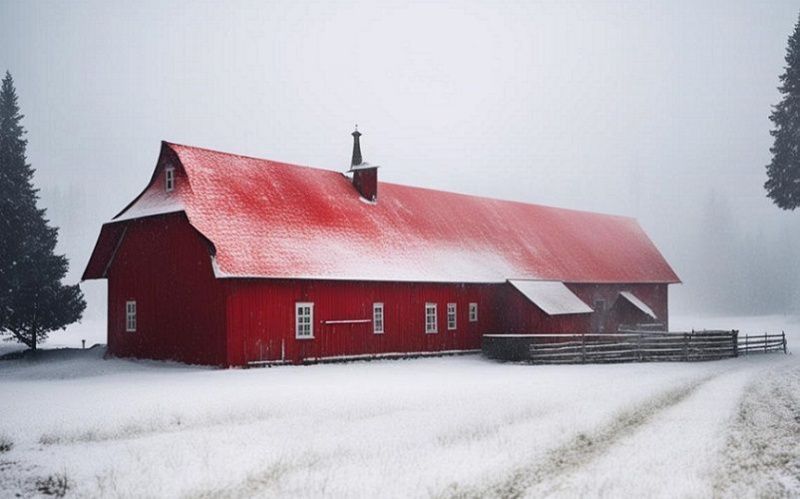Winter Preparedness: 7 Essential Tips to Safeguard Farm Buildings from Heavy Snow Loads
Sourse: The DairyNews
As a formidable winter storm looms over the northern part of USA, poised to unleash heavy snow, sleet, and ice, farmers and ranchers are diligently preparing their operations for potential challenges.

While livestock welfare remains a top priority, ensuring the structural integrity of buildings is equally crucial. Rural Mutual Insurance Company offers seven practical tips to prevent buildings from succumbing to the weight of heavy snow loads.
As winter's challenges approach, implementing these proactive measures will help fortify farm buildings against the potential hazards of heavy snow loads.
- Know Your Area’s Snow Load: Utilize the Applied Technology Council’s Ground Snow Load by Location tool to determine the specific snowfall average and corresponding snow loads for your zip code.
- Calculate Roof Capacity: Recognize that not all buildings are constructed alike. Use the formula provided by the Wisconsin Cooperative Extension Service to estimate your roof's capacity: Calculated Roof Loading (lb/ft2) = Depth (ft) x Density (lb/ft2/ft depth).
- Keep Buildings Clear of Snow: Regularly clear accumulated snow, especially when it exceeds 4 feet of dry snow or 2 feet of heavy snow or ice on the roof. Employ a snow rake with a long extension arm while prioritizing safety.
- Watch for Signs of Stress: Maintain a vigilant eye on your roof throughout winter, particularly on structures with substantial loads. Look for warning signs such as sagging, misaligned trusses, bowed structures, or unusual creaking sounds.
- Plan Before You Build: If you reside in a region prone to heavy snowfall, plan ahead before construction. Collaborate with a licensed contractor to design a building that aligns with your area’s estimated snow loads.
- Consult with a Professional: When meeting with your builder, consider the following:
- Use machine stress-rated lumber for precise strength assessment.
- Construct MSR-made trusses with robust designs and truss plates capable of supporting large snow loads.
- Factor in prevailing winds and building orientation to accommodate uneven snow distribution.
- Implement drainage systems to divert melted snow away, preventing pooling around the building.
- Know Your Coverage: Discuss insurance coverage with your agent to ensure adequate protection in case of unforeseen accidents or disasters. Being prepared with comprehensive coverage can provide peace of mind during challenging times.
As winter's challenges approach, implementing these proactive measures will help fortify farm buildings against the potential hazards of heavy snow loads.
Key News of the Week











